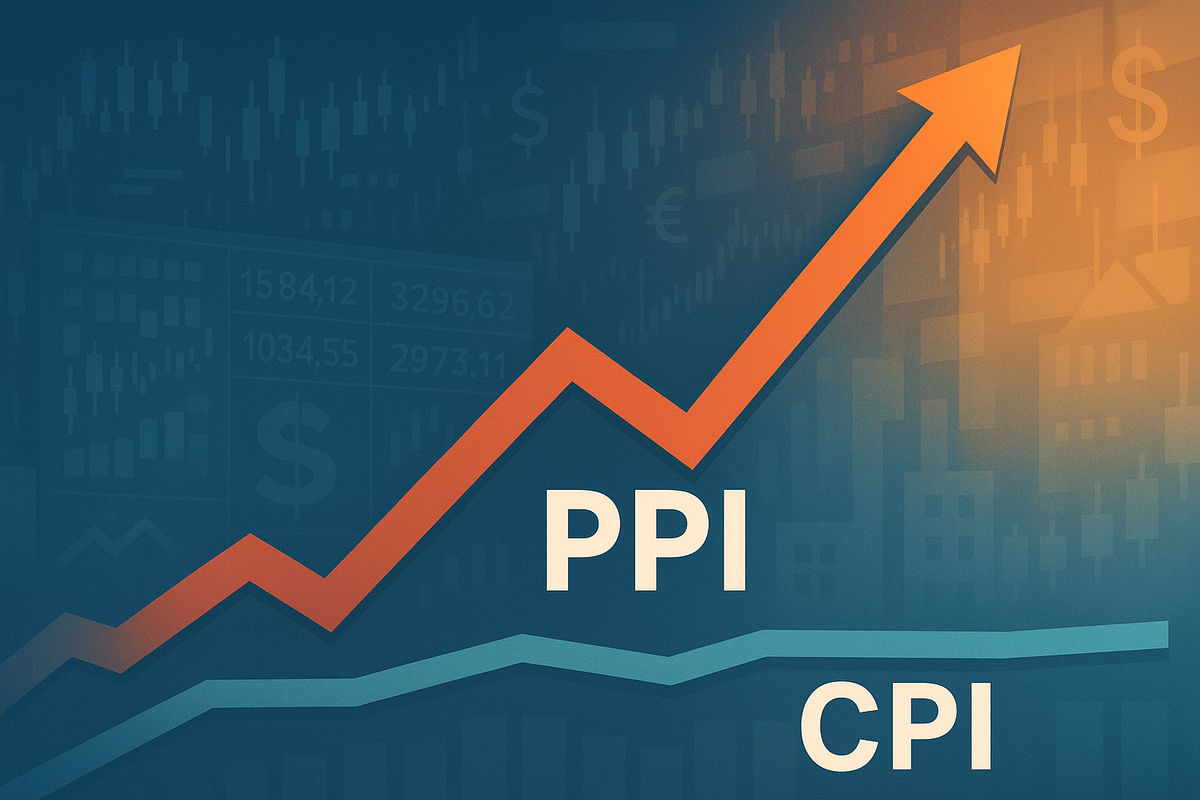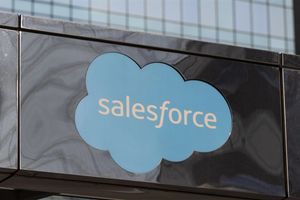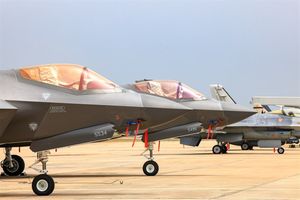
The financial markets are grappling with a perplexing economic puzzle as recent inflation data presents a contradictory picture. July 2025 saw the Producer Price Index (PPI) surge significantly, indicating rising wholesale costs for businesses, while the Consumer Price Index (CPI) remained relatively steady. This divergence has sent mixed signals to investors and policymakers alike, complicating the Federal Reserve's interest rate decisions and intensifying concerns about underlying inflationary pressures, particularly those exacerbated by escalating tariffs. The immediate implication is a heightened sense of uncertainty regarding the future trajectory of inflation and monetary policy.
What Happened and Why It Matters
July's economic reports painted a stark contrast in inflationary trends. The Producer Price Index for final demand jumped by a robust 0.9% month-over-month, significantly exceeding economists' forecasts of a mere 0.2% increase. This marked the largest monthly gain since June 2022. Annually, the PPI advanced 3.3%, surpassing expectations and reaching its highest annual increase since February 2025. Core PPI, excluding volatile food and energy, also saw a substantial 0.9% monthly rise, its largest since March 2022, and a 3.7% annual jump, the highest since April 2021. This broad-based increase was primarily driven by a 1.1% rise in services prices, accounting for over three-quarters of the overall advance, with notable climbs in trade services margins and machinery and equipment wholesaling. Goods prices also posted their biggest gain since January, rising 0.7%, fueled by increases in vegetables, meat, eggs, and processed energy goods.
In stark contrast, the Consumer Price Index for All Urban Consumers (CPI-U) increased a more modest 0.2% on a seasonally adjusted basis in July, following a 0.3% rise in June. The all-items index rose 2.7% over the last 12 months, holding steady at the same annual rate as June and slightly below economists' forecasts. However, core CPI, which strips out food and energy, showed a sharper rise of 0.3% month-over-month, its sharpest gain in six months, and an annual increase of 3.1%, a five-month high. Key contributors to the monthly CPI increase included shelter, medical care, airline fares, recreation, household furnishings and operations, and used cars and trucks. Energy prices, particularly gasoline, saw a decline, which helped temper the overall CPI increase.
The divergence between the surging PPI and the relatively stable headline CPI is a critical concern. While consumers are not yet feeling the full brunt of inflation, the significant jump in producer prices indicates that wholesale costs and input expenses for businesses are rising sharply. This suggests that businesses, which have largely absorbed increased costs so far, may soon be compelled to pass these higher expenses on to consumers, potentially leading to future consumer inflation. This dynamic complicates the Federal Reserve's balancing act between maintaining price stability and supporting employment, especially given recent signs of a softening labor market.
The hotter-than-expected PPI report significantly dampened market expectations for a Federal Reserve interest rate cut in September. Before the PPI release, traders were pricing in nearly a 100% chance of a September rate cut. However, following the PPI data, the probability of the Fed keeping the benchmark federal funds rate unchanged at its current range of 4.25% to 4.5% rose to 7.5%, and the likelihood of a 25-basis-point cut decreased to approximately 90%. This shift underscores the market's sensitivity to inflation data and the Fed's data-dependent approach.
The Shifting Sands of Profitability: Who Gains, Who Loses?
The conflicting inflation signals and the impact of tariffs create a complex landscape of potential winners and losers in the market. Companies with strong pricing power and those less reliant on imported goods or raw materials subject to tariffs are likely to be "winners." For instance, businesses in the services sector, which saw a significant price increase in the PPI, might be better positioned to pass on rising costs. Companies like UnitedHealth Group (NYSE: UNH) or CVS Health Corporation (NYSE: CVS) in the medical care sector, or airlines such as Delta Air Lines (NYSE: DAL) and Southwest Airlines Co. (NYSE: LUV), which saw price increases in the CPI, could potentially maintain or improve their margins if they can continue to pass on rising input costs to consumers. Similarly, companies in the recreation and household furnishings sectors might also find themselves in a relatively stronger position.
Conversely, "losers" are likely to be companies with thin margins, high exposure to rising input costs, or significant reliance on imported goods affected by tariffs. Manufacturers heavily dependent on steel, aluminum, or other raw materials that have seen price spikes due to tariffs will face increased production costs. For example, automotive manufacturers like General Motors Company (NYSE: GM) or Ford Motor Company (NYSE: F), or appliance makers such as Whirlpool Corporation (NYSE: WHR), could see their profitability squeezed if they cannot fully pass on these higher costs to consumers. Retailers, particularly those operating on tight margins, might also struggle as they absorb higher wholesale prices or risk losing sales if they raise consumer prices too much. Companies in the food processing sector, which saw increases in vegetable, meat, and egg prices, could also face margin pressure.
Furthermore, companies that rely heavily on international supply chains, especially those sourcing from regions impacted by increased U.S. tariffs, will likely see their costs rise. This could include a wide range of consumer goods companies. The increased cost of goods could also dampen consumer spending on discretionary items, impacting companies across various sectors. Investors in fixed-income assets, particularly those not inflation-linked, could also see the real value of their returns eroded if inflation accelerates more than anticipated.
Industry Ripples and Broader Economic Implications
This latest inflation data fits into a broader narrative of persistent inflationary pressures, even as the economy shows signs of cooling in other areas, such as the labor market. The significant jump in PPI, particularly in services and core components, suggests that underlying inflationary forces are still robust, challenging the narrative that inflation is steadily receding. This event highlights the stickiness of inflation, especially when driven by supply-side factors like tariffs and rising input costs.
The potential ripple effects are substantial. Competitors and partners across supply chains will face similar cost pressures. Businesses that can innovate to reduce reliance on tariff-affected imports or find more efficient production methods will gain a competitive edge. Those that cannot adapt may see their market share erode. Regulatory and policy implications are also significant. The White House's assertion that tariffs have not caused inflation is increasingly challenged by the PPI data, which shows clear evidence of tariffs feeding into higher costs across the supply chain. This could intensify debates around trade policy and the effectiveness of current tariff regimes.
Historically, periods of diverging producer and consumer prices often precede a broader acceleration in consumer inflation, as businesses eventually pass on their increased costs. The current situation bears some resemblance to periods where supply chain disruptions or commodity price spikes led to higher input costs, which eventually filtered down to consumers. The key difference now is the explicit role of tariffs, which act as a direct tax on imports, raising costs for domestic businesses. This adds a layer of complexity, as tariffs are a policy choice rather than a purely market-driven phenomenon. The resilience of "Big Tech" stocks, such as Apple Inc. (NASDAQ: AAPL) and Microsoft Corporation (NASDAQ: MSFT), in the face of broader market weakness, as noted in the research, suggests that investors are still seeking refuge in companies with strong balance sheets and perceived pricing power, even amidst inflationary concerns.
The Road Ahead: Navigating Economic Crosscurrents
In the short term, markets will be keenly watching for further inflation data, particularly the next CPI report, to see if the PPI surge begins to translate into higher consumer prices. The Federal Reserve's upcoming meetings will be critical, as policymakers weigh the conflicting signals. If core CPI continues to rise, or if headline CPI begins to accelerate, the likelihood of a September interest rate cut will diminish further, and the Fed might even consider a more hawkish stance. Businesses will likely continue to evaluate their pricing strategies, potentially implementing price increases to offset rising input costs. Consumers, in turn, may face higher prices for a range of goods, from furniture to food.
In the long term, the trajectory of inflation will depend heavily on global supply chain stability, geopolitical developments affecting commodity prices, and the evolution of trade policies, particularly tariffs. Companies may need to strategically pivot their supply chains, seeking out domestic suppliers or diversifying their international sourcing to mitigate tariff risks. Investment in automation and efficiency improvements could also become more critical to offset rising labor and material costs. Market opportunities may emerge in sectors that offer inflation hedges, such as real estate, commodities, or companies with strong pricing power and low exposure to tariff-affected inputs. Conversely, challenges will persist for businesses with high cost sensitivity and limited ability to pass on price increases. Potential scenarios range from a "soft landing" where inflation gradually subsides without a significant economic downturn, to a more challenging "stagflationary" environment where high inflation coexists with slow economic growth.
Conclusion: A Market on Edge
The July inflation data presents a clear conundrum for the financial markets: a significant surge in producer prices juxtaposed with relatively steady consumer prices. This mixed signal underscores the persistent and complex nature of current inflationary pressures, with tariffs playing an increasingly visible role in driving up business costs. The immediate impact has been a recalibration of interest rate expectations, with the market now less certain about a September rate cut from the Federal Reserve.
Moving forward, investors should closely monitor how businesses respond to rising input costs – whether they absorb them, pass them on to consumers, or find innovative ways to mitigate them. The key takeaway is that while headline consumer inflation appears contained for now, the building pressures at the producer level suggest that consumers may soon feel the pinch. The resilience of certain market segments, like "Big Tech," highlights a flight to quality and pricing power. What investors should watch for in the coming months includes the next rounds of CPI and PPI data, the Federal Reserve's rhetoric and actions, and any shifts in trade policy that could alleviate or exacerbate tariff-related cost pressures. The current environment demands a nuanced understanding of inflation dynamics and a strategic approach to portfolio management, prioritizing companies with robust business models and the ability to navigate a potentially more inflationary future.





